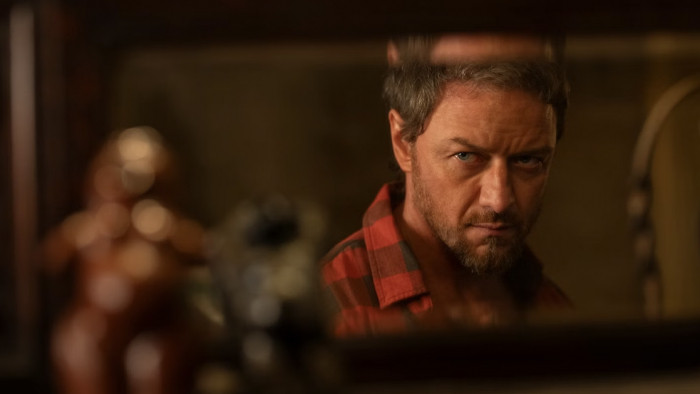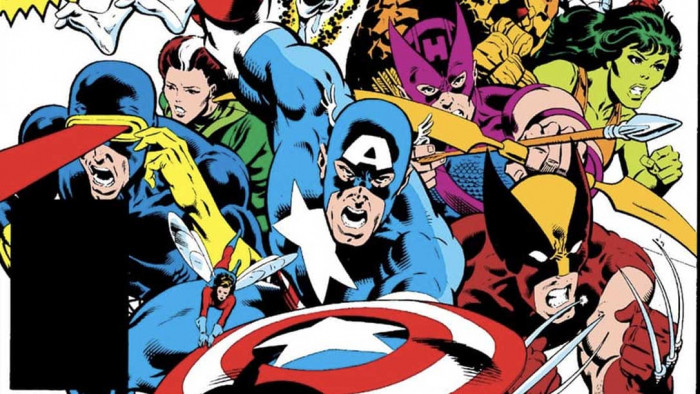How ‘The Shape of Water’ subtly became the queer, race-aware, #MeToo masterpiece of 2018
This movie will have you bawling in the cinema


When I walked into the small, three-screen cinema hidden above an HMV in Wimbledon at the weekend I was already feeling a little bit emotional. It was the first time I’d ever gone to the cinema on my own (which was strangely triggering my ever-present anxiety) and, more importantly, I’d been waiting to see this film for a very long time. It was Guillermo Del Toro’s The Shape of Water and it wasn’t long before I was quietly wiping away tears of joy from my face.
I’ve always felt an emotional connection to Guillermo Del Toro’s work. I’ve never met him but I love and appreciate how he tells the stories of people who are usually overlooked. When I first watched Pan’s Labyrinth, I saw in Ofelia a model of who I wanted to be. She was brave, resilient, fearless – even though her circumstances don’t give her any right to be that way. She’d face down any monster and she’d win.

Fearless Ofelia in the magical Pan’s Labyrinth
In The Shape of Water, too, we meet another fearless female character; this time it’s Elisa Esposito (played powerfully by Sally Hawkins). And it’s the role of Elisa that makes me believe The Shape of Water is so important for 2018. My point is this: The Shape of Water is a #MeToo movie with lessons for both women and men. Elisa, who works as a cleaner in a shadowy US Cold War research facility, suffered a mysterious assault earlier in her life that left her with strange markings on her neck and without the use of her vocal cords. And yet, just like Ofelia, she is immensely powerful.
To me, The Shape of Water, co-written by Game of Thrones’ Vanessa Taylor, carries an important message about female agency. Elisa carries herself with a wild, reckless and wonderful impulsiveness. She doesn’t care about the consequences.
And The Shape of Water doesn’t shy away from sex – we see Hawkins naked and masturbating in the bath, for example, joyously finding self-pleasure and reaching climax on her own. She knows herself and is in charge of her own body.
At first, I wondered whether Elisa’s voicelessness could be a confirmation of classic fairy tale archetypes that silence, victimise and marginalise women (cc: The Little Mermaid’s Ariel). And, of course, Del Toro is famously obsessed with fairy tales.
But watching the film, I quickly realised that Elisa’s silence is actually subversive. Both she and the male-looking fish creature are voiceless, but they’re still able to communicate their love for each other. In the end, I didn’t look at the film and ask, “Why hasn’t she got a voice?” I looked at it and thought “Why would she want one?”
Most of the characters in the film (especially the men) who do have voices only use them for death and destruction. Just look at the biblically violent Colonel Richard Strickland (Michael Shannon) who is a model for the kind of toxic, repressed masculinity that is still responsible for sexual harassment, for acts of mass violence and for the support of far-right, regressive politics. Or look at General Hoyt (Nick Searcy) who delivers a withering soliloquy about the fragility of modern masculine identity. Or look at the husband of Zelda Delilah Fuller (Octavia Spencer) who barely speaks to his wife for years until he bitterly betrays her by ratting out her friend.
In a world of violent men or voiceless monsters, I’d rather be a monster every time.

Colonel Richard Strickland (Michael Shannon) transforms into a decaying monster before our eyes
And I think The Shape of Water is also a wonderfully unexpected piece of queer cinema. Not only in the broad sense of celebrating the stories of outsiders but specifically in creating LGBT+ characters. Elisa’s neighbour Giles (Richard Jenkins) is an older, struggling gay artist who watches old Hollywood movies with glamorous stars like Betty Grable.
Giles is complex, at-times cowardly and imperfect – just like us gays in real life. But, unlike many depictions of gay people in film, in the end he doesn’t die or become a tragic figure; he, miraculously, turns out to be a hero. Queer audiences have grown so familiar with our stories always ending in disaster that to see this film’s positive representation of LGBT+ people feels revolutionary.

Giles (Richard Jenkins) is a complex, brave gay character
The film also has moments of jolting conflict like in Dixie Doug’s pie emporium when the racist and homophobic waiter barks at a black couple to leave the restaurant and tells Giles that gays like him aren’t wanted “because this is a family place”.
In Octavia Spencer’s character we also have a brave, fully-realised black woman, which along with fantastic films like Black Panther, feels like an important step in recognising and celebrating black stories.

Zelda (Octavia Spencer) plays a smart, fully-realised black woman
To balance out this delicate discussion of gender, sexuality and race, the film has some really funny moments – especially Dr. Robert Hoffstetler’s (Michael Stuhlbarg) hilariously contrived interactions with his Soviet spy handlers.
Meanwhile, the film’s music is jazzy and luxurious, and the production and visual effects give a decadent vibrancy. One of the movie’s designers Jeremy Gillespie, who also directed The Void, told ShortList: “I was lucky to work on The Shape of Water while finishing off The Void. Guillermo is a really fun guy to work for and clearly gives the visual aspect of his films great consideration.”
Of course, there are other films I loved this year like Call Me by Your Name, Get Out and Three Billboards Outside Ebbing, Missouri. But this film’s message, its stunning visuals and its serenity-inducing celebration of unbridled love make it the perfect movie for 2018.
Mexican director Del Toro, who provided the breathing sounds for his enigmatic fish-creature, has filled this film with a flowing sense of Latin American magical realism and in The Shape of Water’s final moment of death/rebirth it reminded me of Clarice Lispector’s sublime Hour of the Star (which everyone should read); only in death can you truly find love.
(Images: Rex / Pan’s Labyrinth / The Shape of Water)








